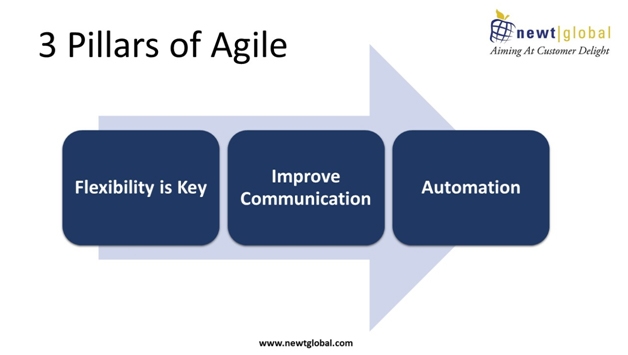
“Our team is already agile”- This statement is commonly heard but
What is it referred to?
What are the 3major pillars of Scrum?

These are the questions, everyone would love to ask Scrum Masters, Product Owners and members of development teams. Data revealed that common idea of agile is:
- Conducting Scrum events (sprint, sprint planning, daily scrum, sprint review and sprint retrospective),
- Connecting these events to agility and keeping the ideas of transparency, inspection and adaptation on the side.
Therefore, we can say that the idea of only events and practices is a clear indication of the missing understanding of the core mindset of agile and Scrum.
The simplistic design of Scrum framework and the embedded practices are the heart of creating agile culture for software development.It focused on improving communication, collaboration and integration between the software development and IT operation teams.
Today every company faces unique challenges. Programmers and system administrators need more than a comfortable chair and powerful hardware. Providing the right equipment and services is only the start. True success comes from providing a workplace culture which aligns with your staff. By following the tips below, you can begin to build a successful DevOps culture.
FLEXIBILITY IS KEY
Hottest trend of modern IT era, could become the next FORTRAN over the next few years. In the DevOps and system administration space, it’s not enough to be a specialist. Also one should be able to pick up new skills on the fly and be focused on working efficiently.
- For system administrators, some rigidity can be expected.
- To make the process a bit less overwhelming, one could use tools to automate task escalation and assignments.
There needs to be a balance between structure and chaos. Only you can determine the balance which works best for your staff.
IMPROVE COMMUNICATION
Communication is key for a true DevOps approach. It can make or break team performance. A solid work culture is one where input and feedback is encouraged. To create better software and do better releases, the team needs to constantly communicate with each other from the planning to release phase to solve impediments and improve the quality of the release process. This not only boosts morale, but it also can help improve problem solving as it enables teams to learn from each other’s experiences. Although communication isn’t a technical skill like programming or managing servers, improving this skill typically has an ROI.
AUTOMATION
The success of DevOps lies in automation and single biggest enabler for DevOps. Development teams can learn from operations the value of automation and how to create automation scripts to improve the overall process. Together the team is responsible for defining the desired state of the infrastructure and convert this to code.
Scrum works not because of its pillars or rules, but because, as a predecessor, it adheres to the underlying values and principles of the Manifest for Agile Software Development.This results in faster time to market, better delivery predictability, increased customer responsiveness, ability to change direction by managing changing priorities, enhanced software quality, and improved risk management.
ABOUT THE AUTHOR

SANJEEV MALHOTRA
Director – DevOps and Cloud
